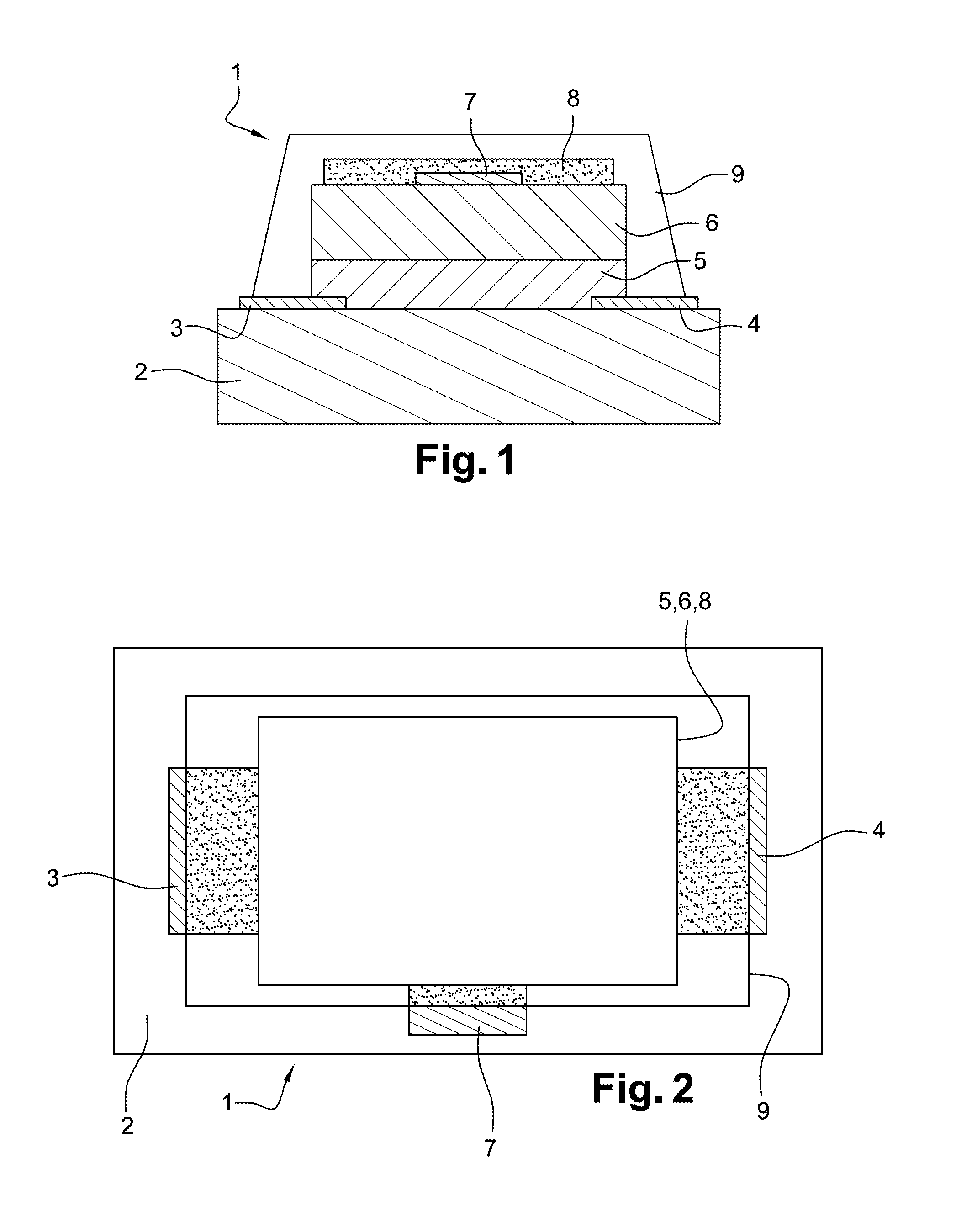Piezoelectric pressure sensor
- Summary
- Abstract
- Description
- Claims
- Application Information
AI Technical Summary
Benefits of technology
Problems solved by technology
Method used
Image
Examples
Embodiment Construction
[0039]For clarity, in the following description, the same elements have been designated with the same reference numerals in the different drawings. Further, the various cross-section views are not necessarily drawn to scale.
[0040]Referring to FIGS. 1 and 2, pressure sensor 1 according to the invention comprises a lower substrate 2, having two electrodes 3, 4 deposited thereon, respectively a source electrode 3 and a drain electrode 4.
[0041]Lower substrate 2 is made of a material selected from the following list: glass, doped or undoped silicon substrate, polymers such as polyethylene terephthalate (PET), polyethylene naphthalate (PEN), polyimide (PI), polycarbonate, acrylates, etc.
[0042]It should however be obvious that lower substrate 2 may be obtained in any other material well known by those skilled in the art.
[0043]Further, source and drain electrodes 3 and 4 are made of metal, such as aluminum, titanium, nickel, gold, chromium, etc . . . , or of metal particles, of metal oxides...
PUM
 Login to View More
Login to View More Abstract
Description
Claims
Application Information
 Login to View More
Login to View More - R&D
- Intellectual Property
- Life Sciences
- Materials
- Tech Scout
- Unparalleled Data Quality
- Higher Quality Content
- 60% Fewer Hallucinations
Browse by: Latest US Patents, China's latest patents, Technical Efficacy Thesaurus, Application Domain, Technology Topic, Popular Technical Reports.
© 2025 PatSnap. All rights reserved.Legal|Privacy policy|Modern Slavery Act Transparency Statement|Sitemap|About US| Contact US: help@patsnap.com



